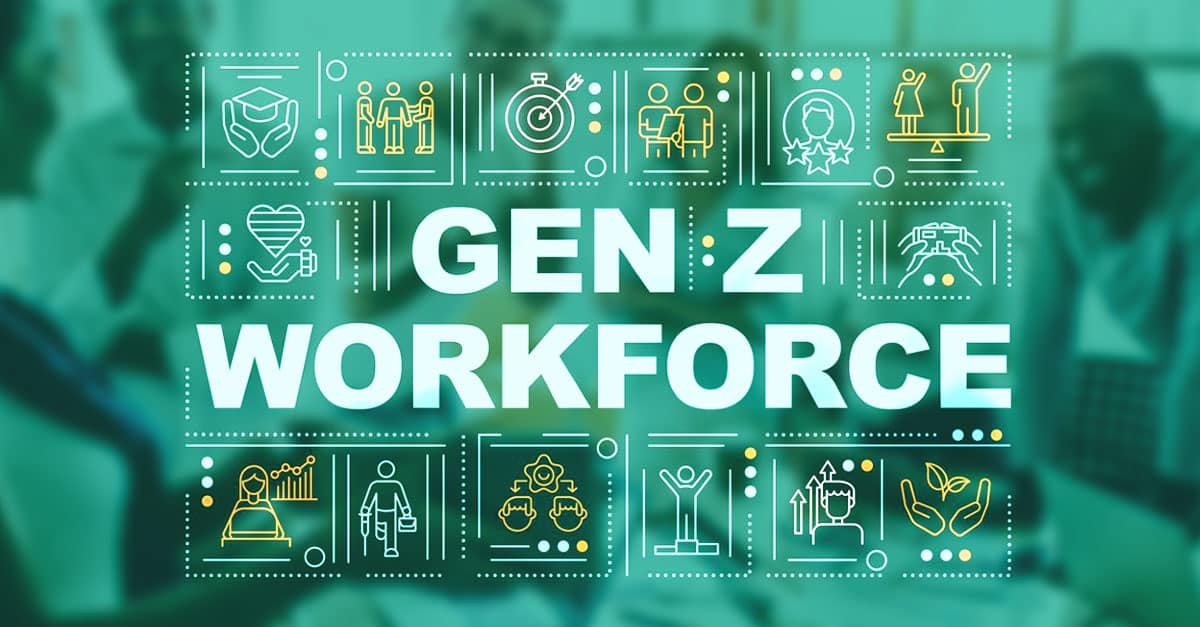Resumes in the Age of AI: A Tradition Under Scrutiny
The traditional resume (or CV) has long been the currency of hiring – a concise record of where we’ve worked, what we’ve studied, and a sprinkling of skills. This format has hardly changed in decades, even as the world of work transformed around it. Today, as artificial intelligence (AI) and data analytics permeate recruitment, many are questioning whether a static one-page CV is still up to the task. Hiring managers and recruiters must navigate a hail of very similar résumés, while job seekers fear that their individual strengths are lost in a keyword scan. In an age where skill demand is developing at a pace never before seen – skill sets for occupations have shifted ~25% since 2015 and may double by 2027 (linkedin.com) – a snapshot document that preserves an individual’s work history is beginning to seem woefully inadequate.
Keep the limitations in mind: A résumé mainly indicates where you attended school and where you worked. This information tends to represent ability, but it can be inaccurate or biased. A well-known school or company may impress a recruiter, but it may tell little about his or her skills or potential. On the contrary, a self-taught programmer in India or a marketing whiz in Nigeria might be overlooked because their CV lacks pedigree – the so-called “paper ceiling” that skills-first hiring advocates seek to tear down (ssti.org). As one LinkedIn engineering director put it, we’ve relied on “insufficient and unequal signals” like college names or personal connections to evaluate talent. At the same time, candidates have become skilled at the résumé game to bypass AI screening – sometimes by loading up on keywords or even employing AI software such as ChatGPT to write the ideal résumé. This competition further erodes the worth of the classic CV.
From Pages to Graphs: How AI is Mapping Skills
The “skills graph” – a radically new way of depicting an individual’s abilities. Rather than a simple list of previous job titles, a skills graph employs AI to chart the network of skills, knowledge, and characteristics an individual possesses and how they interconnect and map to what employers require. Imagine it as a dynamic ontology of skills or a network: whereas a résumé is a snapshot, a skills graph is a live, linked portrait of expertise.
One of the leaders in this practice is LinkedIn. Capitalizing on its 930+ million members worldwide, it crossed 1.1 billion users by early 2025 (columncontent.com).
LinkedIn has been creating a vast Skills Graph to fuel a “skills-first world.” This AI-powered graph connects more than 39,000 defined skills among 875 million individuals and 59 million businesses globally. It’s a generic skills vocabulary that knows, for instance, that if a candidate includes “cost management” as a skill, it’s applicable to job ads requesting “project budgeting”. The graph can make inferences of relationships and equivalencies that a straightforward keyword search of a CV may not catch.
A skills graph not only indexes the skills themselves – it also maps relationships and context. LinkedIn’s graph, for example, knows which skills co-occur (e.g., Python programming is often used together with data analysis and machine learning) and even monitors budding skills. This allows recruiters to identify people with the appropriate underlying abilities, even if their résumés don’t match the precise wording on the job posting. It also assists applicants in finding career opportunities by bringing transferable skills to the forefront. By being more about “what you can do” and less about “where you’ve been,” skills graphs are designed to make hiring more merit-based and forward-looking. The idea goes beyond LinkedIn.
Workday, a top HR software company, developed a Skills Cloud to ensure consistency in how skills are defined throughout HR processes. It employs AI to read job histories and employee profiles to recommend skills and identify gaps (workday.com). SAP, another corporate behemoth, has teamed up with startups to enhance its talent platform with skill graphs – for instance, SAP’s SuccessFactors now incorporates SkyHive’s AI, which automatically reads skills from employees’ work history or CVs and creates dynamic skill profiles (skyhive.ai). These profiles refresh as individuals learn more or as the demands of the job alter, providing a breathing living alternative to the fixed CV. Even the concept of a “talent graph” is arising – a larger scale version of a skills graph containing not only hard skills but experiences, interests, and even potentially soft skills or work style. The aspiration is a 360-degree assessment of an individual’s suitability for a position.
Josh Bersin, a human resources industry analyst, outlines talent intelligence systems that can consume “great quantities of public information” about an individual – the work they’ve done, the writing they’ve done, the code they’ve written, leadership positions they’ve held – and algorithmically assess their suitability for a given team and company culture (joshbersin.comjoshbersin.com). This is way more than any conventional résumé may include.
Global Companies Leading the Charge in AI Talent Discovery
Big Tech’s Talent Tech: LinkedIn, Microsoft, Google
No wonder technology firms are leading this recruitment revolution – both in creating the tools and applying them within. Microsoft, which owns LinkedIn, is embedding LinkedIn’s skills data into its enterprise software suite. The Microsoft Graph (don’t confuse it with LinkedIn’s graph) already ties together information about employees’ work. In the near future, it can assist in bringing internal candidates with suitable skills to a project or suggest training to fill skills gaps (sap.com). In addition, Microsoft’s own HR department has adopted a “skills-over-schools” approach to recruitment, a change spurred by its requirement for talent within quickly developing areas such as cloud computing and AI.
Google has tackled the problem both as an employer and a supplier. Internally, Google has long depended on data-driven recruitment – famously using structured interviews and tests to assess ability over CVs. It even created an algorithm (subsequently abandoned for bias) to filter résumés, learning the limitations of plugging past hiring data into AI firsthand.
As a technology vendor, Google introduced Cloud Talent Solution, an AI-driven job-matching service employed by companies, such as CareerBuilder. The service applies machine learning to interpret the intent of job searches and résumés and matches candidates to positions based on skills and interests (such as commute distance), as opposed to mere keyword overlap (hrdive.com). During tests, this AI matching raised employment seeker involvement profoundly. For example, CareerBuilder observed 41% higher “expressions of interest” among candidates utilizing Google’s AI-recommended work (hrdive.com). While Google discontinued its own applicant tracking system (Google Hire), it still provides talent-matching AI via its cloud platform. In essence, Google says the future is not in analyzing prettier résumés but in bringing the right people to the right positions through data.
Pushing “Skills-First”: IBM, SAP, and Legacy Employers
One of the loudest proponents of throwing out outdated recruitment practices is giant, established businesses that have fought with talent deficiencies. IBM is a prime example. The tech giant came to understand years ago that requiring four-year degrees was unnecessarily limiting its pool of qualified applicants. The late former CEO Ginni Rometty was a vocal proponent of “new-collar” positions and a skills-based model, inviting non-traditional applicants into IBM’s doors. “You can remove the degree requirement,” one IBM executive quipped, “because if you still hire for proven skills and potential, the performance speaks for itself.” Today, over 50% of IBM’s U.S. job openings no longer require a bachelor’s degree (ibm.com), and about 15% of IBM’s recent U.S. hires have no four-year degree (hrdive.com). IBM also spent USD 1 billion on employee training and developed many apprenticeship programs to develop skills in-house. This change isn’t purely philanthropic – it’s filling a genuine business requirement. IBM and others discovered that a lot of jobs (in tech support, coding, design, etc.) could be done by competent individuals who learned from boot camps or on the job. By emphasizing tangible skills, IBM has hired more quickly and even enhanced diversity, all while breaking free from the crutch of pedigree.
SAP, based in Europe, has similarly shifted to a skills-first approach in its products and its employees. On the product side, SAP’s SuccessFactors offering now has a “Talent Intelligence Hub” powered by AI to make guesses about employees’ capabilities based on diverse data (performance ratings, work projects, even voluntary self-ratings) and suggest training or career opportunities (community.sap.com). To complement this function, SAP even made an alliance with AI upstart SkyHive. Integration automatically extracts skills from résumés and job profiles, creating rich skill portfolios for each candidate or employee in the system immediately. For a large global employer who utilizes SAP, this translates to the moment that an applicant submits (or an employee refreshes their profile), an AI can mark all pertinent skills – even those only implied by the individual’s experience – and align them to the firm’s roles and competency framework. The static job description is converted into a dynamic skill profile, and similarly, the static CV is converted into a dynamic candidate profile. SAP’s own HR function has also started to focus on continuous skill development, with the encouragement to employees to maintain an up-to-date skills profile (a living CV of sorts) that the organization can search for when new opportunities become available.
Startups and New Players: The Talent Intelligence Ecosystem
Where big firms paved the conceptual path, startups have been quick to innovate. In the past five years, a wave of talent intelligence platforms has flooded the HR tech market (joshbersin.com). Their promise: to use AI and “people data” to radically improve how organizations find and manage talent. Companies like Eightfold AI, Virtual Employee, Beamery, SeekOut, Gloat, Phenom, and HiredScore are now well-known in HR circles. These platforms function as an AI layer on top of traditional talent databases:
- Eightfold AI, for instance, offers a deep-learning model trained on a gargantuan dataset of resumes, job descriptions, and career paths. It claims to predict not only who might be a good fit for a current opening, but also what other roles a person could succeed in – essentially uncovering “adjacent skills.” Eightfold’s system will happily tell a recruiter that the best candidate for a cybersecurity analyst role is a gamer with no degree who aced certain online coding challenges, even if that person’s résumé would never get past a normal screen. No wonder organizations from NTT Data to the U.S. Air Force have used Eightfold to widen their hiring funnels.
- Gloat and Fuel50 (among others) focus on internal mobility: their AI matches employees to gigs or positions within their company based on skills and interests. This helps large enterprises retain talent by redistributing it, using a similar skills-graph concept internally. A company like Unilever (which uses Gloat) can identify, say, a supply chain manager in Brazil with data analytics skills and suggest them for a new digital supply chain project in Singapore – opportunities that might never surface if the company only looked at job titles and org charts.
- SeekOut has built AI search tools that comb through millions of public profiles (from GitHub, patents, research papers, social media) to find talent with specific skills, even if those people aren’t actively job hunting. This flips the script: instead of waiting for the perfect résumé to land in your inbox, AI can proactively discover candidates who haven’t applied at all, based purely on evidence of their skills online.
Crucially, these tools aren’t just fancy résumé databases; they learn and improve as they ingest more data. As Bersin notes, what makes talent intelligence powerful is that the more data you feed these AI models, the better they get at predicting “job fit” and career success. In one striking example, an insurance company using such a system found an unexpected trait that correlated with top sales performance:
a love of cars. The AI discovered that applicants who demonstrated passion for automobiles tended to excel at selling auto insurance – a nuance no résumé would list, but one that did surface through patterns in data. These insights help recruiters look beyond the obvious and give candidates chances they might have been denied if hiring was based on narrow checkboxes.
Skills-Based Hiring Goes Mainstream
What was previously a best practice among tech startups is fast becoming mainstream HR policy across industries. There is a global “skills-first” revolution in full flow. In 2023, a milestone year, several large employers and even governments ditched degree requirements and indicated that skills are paramount. As reported in August 2024, IBM, Delta Air Lines, Google, Bank of America, and other name-brand employers have eliminated the four-year college degree requirement for many jobs. And they are not the only ones – 53% of U.S. recruiters indicated that their firm dropped degree requirements for certain jobs within the last year, prioritizing competencies over credentials. This movement occurs across industries, from technology to manufacturing to retail management.
The data suggests that skills-based hiring isn’t just a nice idea; it produces results. In a recent survey, 90% of companies reported that hiring based on skills (instead of credentials) leads to better hires, and 94% said that employees hired for skills outperform those hired the old way (verifyed.io). These are stunning figures that explain why HR leaders are pivoting so fast. By 2024, four in five employers globally now report using some sort of skills-based hiring (81%, a significant increase from 56% in 2022) (testgorilla.com). Furthermore, 95% of employers attest that skills-based hiring is the future trend that will prevail. That is to say, practically everyone acknowledges this is not just a fleeting phenomenon but a transformational change in how we consider pairing people and jobs.
From the employer’s point of view, the advantages are quantifiable. In the same global survey, 81% of businesses indicated a shorter time-to-hire after implementing skills-based practices, and 78% experienced lower hiring costs. This is usually because AI-powered skill matching can rapidly bring forward qualified candidates that the recruiter may have missed, reducing the search duration. Many also report enhanced workforce diversity by opening the door to non-traditional candidates. One study discovered firms employing AI-based hiring software enhanced the diversity of hires by 35% on average (hirebee.ai), eliminating unnecessary degree requirements and throwing wider nets to attract candidates from diverse backgrounds.
Even the hiring process itself is being altered in concrete ways that job candidates perceive. Old-fashioned steps, such as sending a cover letter or even a formal CV, are being supplemented – and in some cases, replaced – by online tests, aptitude tests, or talent profile submissions. Major companies such as Unilever and PwC have notoriously utilized game-based testing or on-demand video interviewing as initial barriers to entry instead of résumé screens. Unilever’s completely overhauled early-career recruitment process had applicants play neuroscience-informed games and take AI-interpretive video interviews before any recruiter saw their qualifications (theguardian.com). The outcome? Unilever saved an estimated 100,000 hours of recruiter time within a single year and significantly raised the diversity of its recruits, all while not compromising on quality. When a machine learning platform is searching through those video answers for well-documented success characteristics – as opposed to a human digging through résumés for “best schools” – the results can be more merit-driven. It’s an example of skills-first evaluation at scale, gaining efficiency and fairness benefits.
A Global Phenomenon: U.S., India, Europe, and APAC
This shift in talent finding is worldwide in scope. In the United States, long known as the country with college degrees, the shift to skills is already well underway. In addition to the corporate initiatives (such as IBM and Google), government agencies are on board as well. The State of Maryland started a trend by eliminating degree requirements for thousands of state positions, and dozens of states have since joined. Federal agencies are testing skills-based hiring pilots, and bills have been proposed to incentivize (or even mandate) employers to emphasize skills. The recent tight labor market has only hastened this trend – when businesses are having trouble filling jobs, they soon discover that a degree requirement may be driving away excellent employees. At the national level, campaigns such as Tear the Paper Ceiling (a campaign to encourage degree-less skilled workers) have started to gain traction, sharing “STARs” (Skilled Through Alternative Routes) who have thrived after being presented with the opportunity. Internal corporate statistics in America demonstrate that the performance and retention of non-degree workers tend to rival or surpass those of traditional hires, indicating the skills-first strategy.
In India, the world’s fastest-growing large economy, the change is just as real but for other reasons. With millions of young workers joining the labor force every year, Indian employers have been forced to get creative to manage volume and sort out genuine skills among hordes of applicants. It’s no surprise that India has emerged as a hotbed of HR tech innovation – from AI-powered assessment platforms to talent marketplaces. Indian IT services leaders such as Infosys and TCS, who employ tens of thousands every year, now
increasingly employ national skills tests and hackathons to select candidates, instead of caring about which college they went to. This provides opportunities to bright graduates of second-rung colleges or self-taught programmers in small towns. Concurrently, India’s labor force is the most LinkedIn-engaged globally. Along with that, India is LinkedIn’s second-biggest user base, with more than 150 million members (statista.com). Hence, the data available to create skills graphs are abundant. Indian startups have also entered the fray – for instance, firms like Virtual Employee (AI Recruitment), Talview (for AI video interviews), and EdGE Networks (AI talent matching) are offering indigenous solutions to replace résumé screening with more integrated assessment. The cultural attitude is changing towards “what can you do?” – reflected in the popularity of skills certificates (such as Google’s Career Certificates for data analytics or UX design) that Indian job applicants increasingly list on their profiles to enhance their employability.
Europe shows a more risk-averse but increasingly advancing picture. European businesses, particularly in technology and financial centers such as the UK, Germany, and the Netherlands, are embracing AI talent tools, but frequently with a focus on regulation and equity. Any algorithm that significantly impacts employment decisions in the EU can be subject to new “AI ethics” guidelines or the forthcoming EU AI Act, which will most likely categorize hiring algorithms as high-risk systems subject to transparency. Therefore, European HR chiefs prioritize explainable AI – they need tools that not only match candidates but are able to offer reasoning or auditing to prove there’s no bias (or that biases have been mitigated). This has not deterred take-up: Dutch banking giant ING constructed an AI-driven internal talent exchange. At the same time, French cosmetics powerhouse L’Oréal employs AI chatbots to first screen and book candidates, among others. Germany’s Siemens has taken a holistic skills management system investment to lead its Industry 4.0 talent requirements, plotting out what new skills its existing workforce will require and targeting existing employees that can be upskilled, instead of seeking outsiders on the basis of CVs. Even in the public sector, governments in Europe are investigating skills frameworks. The UK civil service recently outlined steps to end default degree prerequisites and recruit skills in many jobs, which conforms to the UK’s emphasis on apprenticeships and vocational education. That being stated, tradition prevails where in some regions of Europe – such as nations in France – low levels of skill-based hiring exist (e.g., some reports place it below 60%) due to residual cultural stress placed on high-tier education impacting recruiting. But the path is evident, and even there, the numbers are increasing year by year.
Throughout the Asia-Pacific (APAC) region, the transition takes on a regional flavor. Singapore has emerged as a regional champion in AI-powered HR. The government’s TechSkills Accelerator program and numerous industry initiatives urge employers to recruit based on certified skills. It is no coincidence that Singapore Airlines was a pioneering user of AI video interview filtering, utilizing it to recruit cabin crew worldwide. The airline cited efficiency and improved standardization in quality filtering as resulting from examining applicants’ language and communication skills through AI, as opposed to varied human interviews of CVs. In Japan, where population pressures are severe, businesses are looking to AI to maximize the use of every possible employee. Old-fashioned Japanese recruitment involved much depending on one’s university and a long series of interviews; now, with talent shortages, particularly in IT, Japanese companies welcome mid-career recruitment and foreign talent and rely on skills testing to assess those who don’t fit the old cookie-cutter mold. Japanese startups are providing AI platforms that, say, scan how an engineer codes (as opposed to who the company they used to work for was) in order to make judgments of ability. In Australia, which has a very educated population, the discussion is moving on to how to validate micro-credentials and short courses. Employers down under are now more willing to consider a candidate’s specialized course in, for example, cybersecurity to be equivalent to a proper degree in computer science. APAC also boasts enormous emerging economies such as Indonesia and Vietnam, where corporations frequently need to recruit at a gigantic scale – in these places, mobile-based skill quizzes and AI chatbots are being used in addition to résumés to weed out large numbers of applicants rapidly. Though drivers differ – whether volume recruitment in India/Indonesia, demographic requirements in Japan, or innovation intent in Singapore – the unifying thread is a regional adoption of technology to see past the CV.
Opportunities, Challenges, and the Road Ahead
The move from traditional CVs to AI-driven skills graphs and talent analytics brings a wealth of opportunities – but also new challenges. On the upside, skills-first hiring promises a fairer and more efficient job market. Candidates get judged on what they can do, not just on buzzwords or past affiliations. This could open doors for millions who previously would be filtered out unjustly. Companies, in turn, benefit from wider talent pools and more data-informed decisions, which can improve performance and retention. Early adopters have seen reduced bias in hiring and a workforce that’s more diverse across gender, race, and socioeconomic background (hirebee.ai). There’s also a significant efficiency gain: AI tools can screen thousands of candidates in the time it takes a person to review one resume, cutting time-to-hire by as much as 50% on average. For growing businesses, that speed can be a competitive edge in securing top talent. And as roles evolve, a dynamic skills database helps with upskilling and internal mobility – companies can quickly identify which employees could fill new needs, reducing the reliance on always hiring from outside.
However, with great power comes great responsibility (and risk). One major concern is algorithmic bias. If the AI models behind skills graphs are trained on historical data, they might inadvertently carry forward human biases. A famous cautionary tale is Amazon’s experimental hiring AI that taught itself to prefer résumés that resembled Amazon’s existing (mostly male) engineering workforce – effectively penalizing women’s resumes until the company discovered the issue and scrapped the project. This underscores the need for transparency and continuous monitoring of these systems. Regulators are taking note. In New York City, for example, a new law now requires that automated hiring tools be audited for bias and that companies disclose to candidates when AI is being used in hiring decisions. The EU’s forthcoming AI Act is expected to enforce strict rules on any AI that filters or scores job candidates, meaning providers of talent intelligence software will need to explain their models and allow opt-outs. For HR leaders, this means working closely with legal and compliance teams as they implement AI – a very different equation from the relatively straightforward compliance around traditional résumés.
Privacy is another concern. Building a rich talent graph may entail collecting a lot of data on individuals – from their public social media posts to detailed results of workplace assessments. Where to draw the line on data usage is still being figured out. Employers must balance wanting a complete picture of a candidate with respecting that individual’s privacy and agency. It’s a delicate dance, and missteps can lead to reputational damage or legal troubles. Imagine a candidate finds out an employer’s AI rejected them because it dug up some decade-old online info deemed “irrelevant” by any human standard – the backlash could be severe. Hence, many companies are adopting a policy of using consented data only (e.g. information the candidate provided, or clearly public professional data like a LinkedIn profile) and avoiding more intrusive scooping of personal data.
Then there’s the human element. As powerful as AI is, few suggest completely removing humans from the hiring process. Tools like skills graphs are aids, not final arbiters. The ideal seems to be a “centaur” approach (to borrow a chess analogy): combine AI’s analytical might with human judgment. AI might shortlist the top 50 candidates based on skills; from there, human recruiters and hiring managers can engage in interviews, work simulations, or reference checks to assess qualities like teamwork, grit, or cultural fit. In fact, freeing HR from the drudgery of résumé triage can enable more human touch in later stages – spending time talking to candidates and really getting to know their ambitions and potential. The challenge is to ensure AI is used as a tool for inclusion and insight, rather than a blunt instrument that could inadvertently screen out great candidates. Achieving that requires careful design (e.g., regularly retraining algorithms to adjust to changing skill needs), diversity in the teams building the AI, and constant feedback loops (e.g., examining why hires succeed or fail and feeding that back into the model).
Towards a New Talent Paradigm
A resume on its own was never a perfect representation of a human being’s potential – it was simply the best tool we had at one time. Now, armed with AI and vast amounts of data, we’re finally able to reimagine that tool. The emerging paradigm is one where jobs find people, not just people find jobs. LinkedIn’s CEO recently observed that we’re moving from the “Internet of People’s profiles” to an “Internet of Skills” – a world in which anyone’s abilities can be discovered and matched to opportunities, often without the person even formally applying. AI-powered skills graphs and talent intelligence platforms are the engines making that possible, parsing not just what we say about ourselves, but also what we’ve actually done and what we could do next.
For HR professionals and business leaders, this shift demands a mindset change as much as a technology upgrade. It means crafting job postings that describe outcomes and skills, not just credentials and experience. It means investing in systems that continually gather data on your workforce’s skills and help visualize the talent gaps. It also means retraining recruiters – the recruiters of the future might be less like résumé sifters and more like data analysts and career coaches, interpreting AI-driven insights for hiring managers and candidates alike.
For job seekers, the advice is also evolving. Instead of obsessing over formatting a CV, candidates are encouraged to build out their online skill profiles, obtain verifiable certifications or badges, contribute to open-source projects or portfolios – in short, create shareable evidence of their skills. In a skills-driven job market, a project you completed, a certification you earned, or a score you achieved on a standardized skills test could carry more weight than the name of a past employer. We may soon live in a world where an AI notifies you that you’re a top match for a role you never would have thought to apply for – because it sees a pattern in your skills and experiences that fits the role, even if your job titles don’t.
Is this the end of the résumé? Not entirely – at least not yet. Traditional CVs will likely coexist with new profiles for a while, if only because change takes time and some recruiters will always want that one-page summary. But it’s clear that the center of gravity is shifting. The resume is taking a backseat to richer sources of insight. As one Harvard Business Review article put it, we’re headed for a world where “a person’s skill set and willingness to learn are more important than the degree they have” (hbr.org). The companies that adapt to this new reality fastest are poised to snag the best talent, wherever it resides, and the individuals who embrace continuous learning and skill signaling will find doors opening in unexpected places.
In the end, this is more than a story about hiring processes – it’s about a democratization of opportunity. When AI-powered skills graphs replace the old gates and filters, the global talent market becomes more meritocratic. The hope is that a kid self-taught in coding from a small town, or a mid-career parent who upskilled online, or a factory worker with brilliant people skills, can all be seen by the algorithms and given a shot at roles where they can thrive. The CV may not disappear overnight, but its dominance is waning. In its place rises a new system of talent intelligence – one that just might help both businesses and workers find a better fit in this fast-changing, skill-hungry world.
Sources:
- LinkedIn Engineering Blog – “Building LinkedIn’s Skills Graph to Power a Skills-First World”linkedin.com
- Josh Bersin – “Enterprise Talent Intelligence Arrives, Disrupting the HR Tech Market”joshbersin.com
- IBM Blog – “Investing in the Future of Work: IBM’s Skills-First Approach”ibm.com
- HR Dive – “IBM shifts focus from degrees to skills-based hiring”hrdive.com
- SSTI (Tech Economy Org) – “Bachelor’s degrees are no longer required for many jobs”ssti.org
- VerifyEd (via Forbes) – “90% of Companies Make Better Hires Based on Skills Over Degrees”verifyed.io
- TestGorilla – “State of Skills-Based Hiring 2024”testgorilla.com
- Guardian – “Unilever saves on recruiters by using AI to assess job interviews”theguardian.com
- SkyHive Press – “SAP partners with SkyHive to accelerate skills transformation”skyhive.ai
- LinkedIn Talent Blog – “Building LinkedIn’s Skills Graph”linkedin.com (skills matching example)
- HireBee Blog – “AI in HR Statistics 2025”hirebee.ai (AI hiring outcomes)
- Statista – LinkedIn global user counts (2025)columncontent.com







